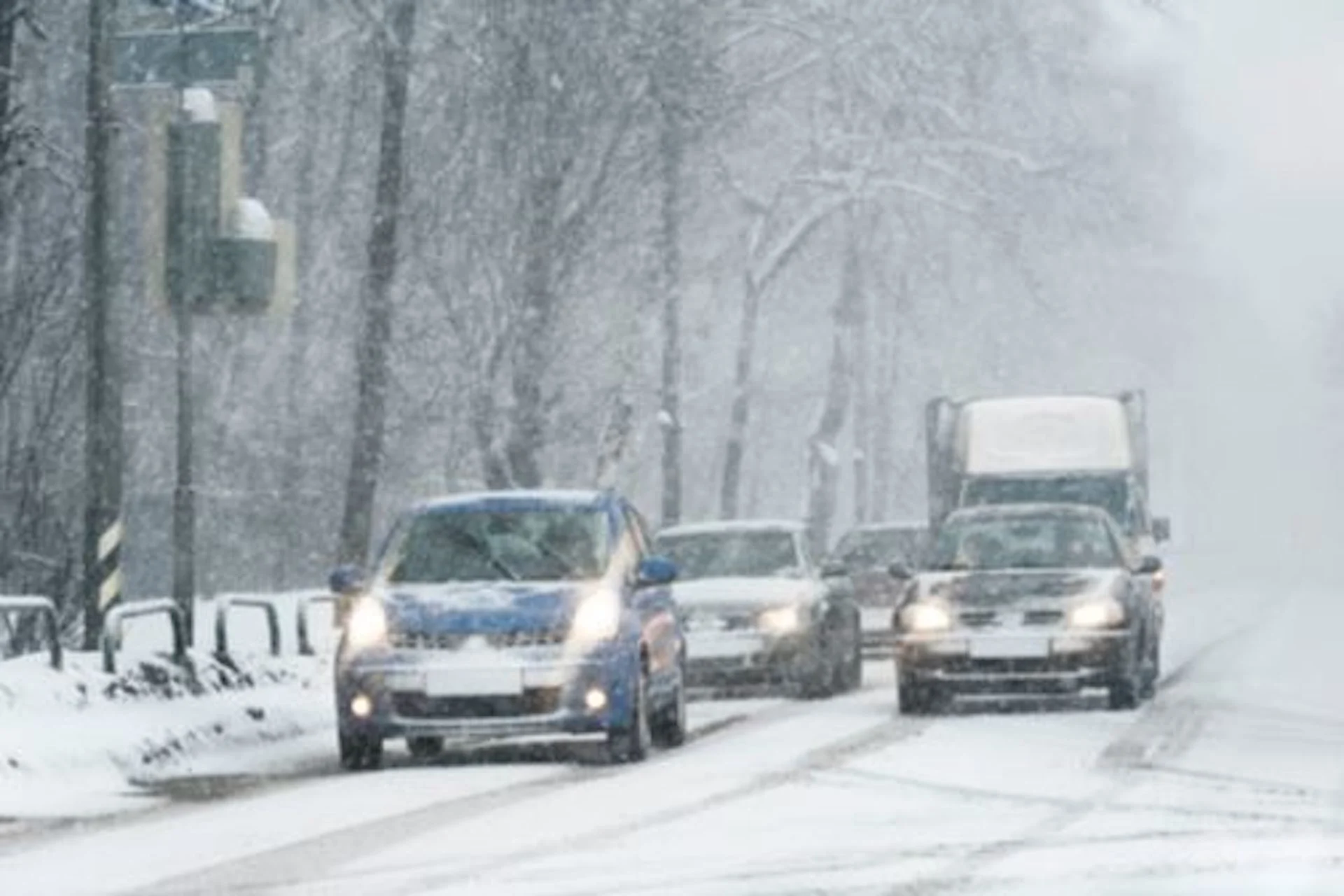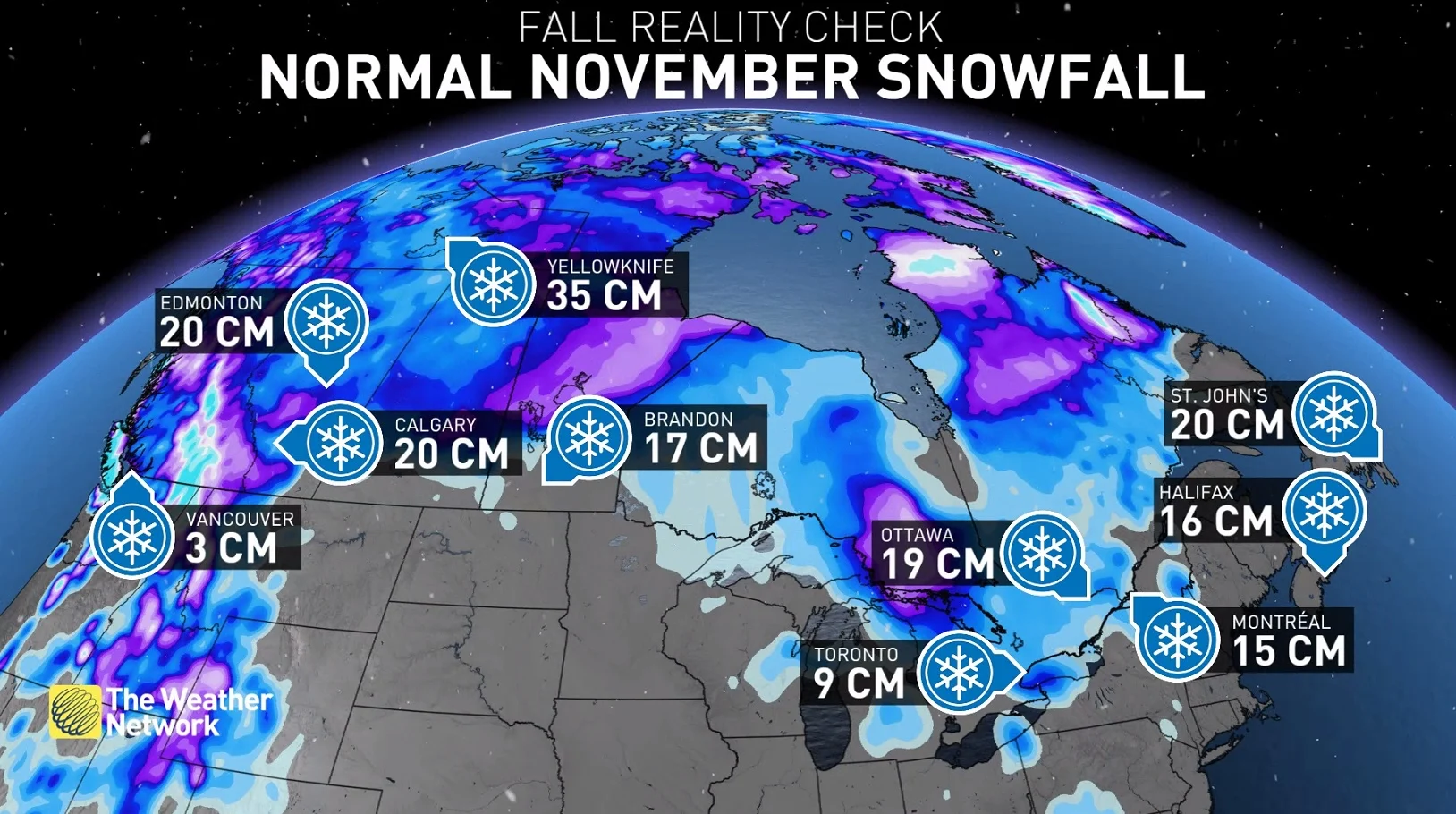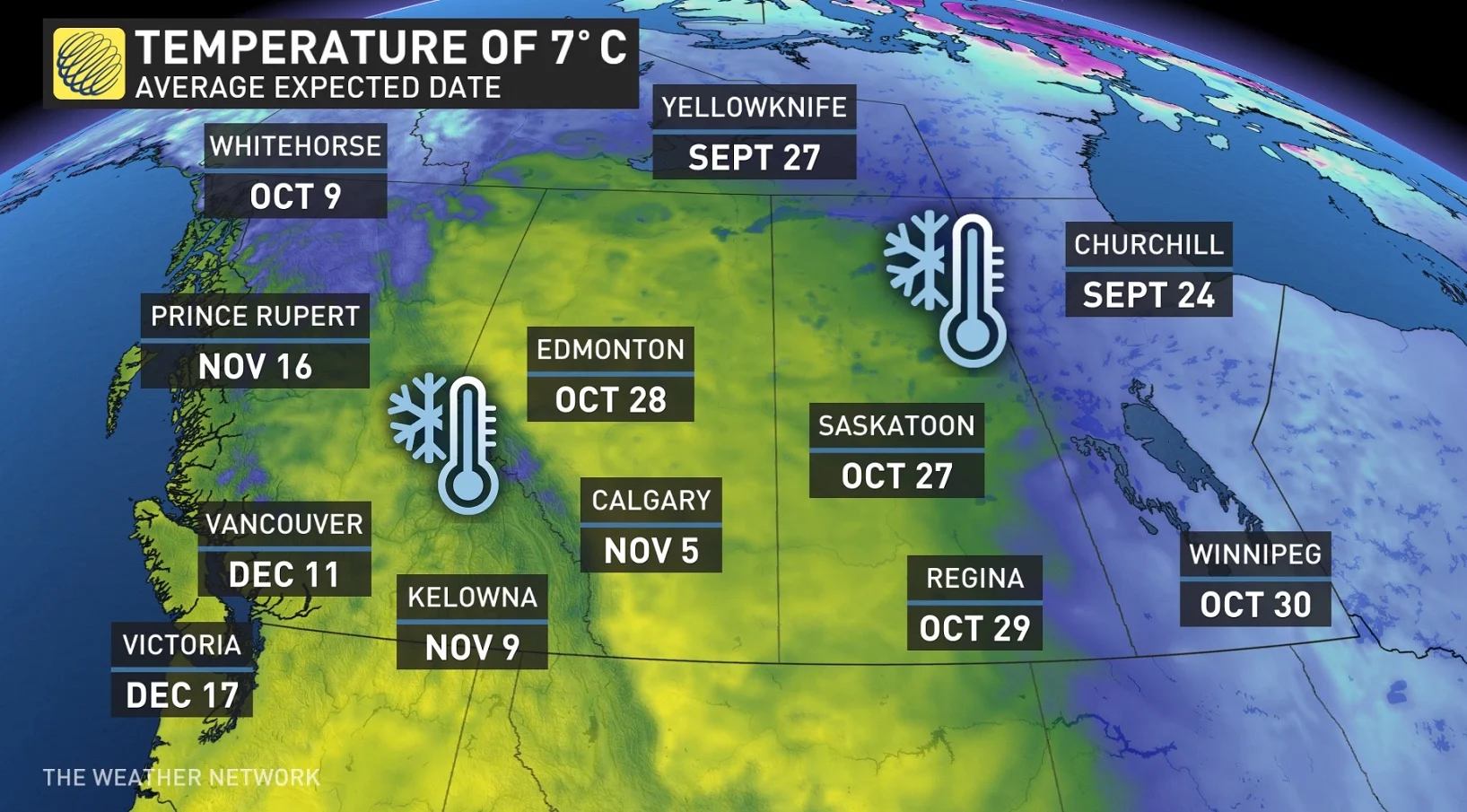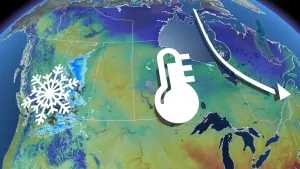
Why the first snowfall of the season can catch drivers by surprise
The calendar says fall, but that doesn't stop Mother Nature from sending snow onto the roads across Canada. The first time it occurs in the season can often catch many drivers by surprise
Many parts of Canada have already seen their first snowfall of the season. While it's certainly not unusual to see snow in the autumn, the first time it occurs can often come as a shock to many drivers.
In most areas of Canada, we know the snow is coming eventually and have seen it occur in the fall every year. So, why is there still an element of surprise for some motorists when the first event takes place?
Kelly Sonnenburg, a meteorologist at The Weather Network, said it usually takes one or two "sneaky, or possibly early" snow events to get Canadians adjusted to winter driving again. Depending on location, sometimes people can go six months without driving in snow.

SEE ALSO: Changing seasons present new challenges on the road. Here's some best practices
"It seems like that first-season snow is always an event that catches some off guard, whether it will be changing winter tires, giving yourself extra time to commute or unpacking the winter gear," said Sonnenburg.
'IT HAPPENS EVERY YEAR'
Geoff Wiebe, national account manager with Kal Tire, also chimed in on the issue in a interview with The Weather Network in 2022.
“It's one of those things that doesn't happen every week. But it happens every year," said Wiebe.
But the timing of the first snowfall can occur when drivers don’t have their winter tires on, yet -- adding to the element of surprise -- as experts suggest making the change by a certain temperature mark, not by a calendar date.

From a technical perspective, the initial snowfall can often be the toughest for motorists until they get used to driving in it again, he noted.
When temperatures hit 7°C consistently, this is when people should make the switch.
"At seven degrees, it's probably not snowing a whole lot. So, do I need to get my tires ready? Well, the answer is yes. Because you want to have them in place when that snowfall first happens, right?" said Wiebe.
He added that it is "always best" to make those changes proactively, ahead of the first snowfall. As a recommendation, Wiebe suggests changing the tires up to two weeks before you see snow for the first time.
"The winter tires are going to work better in colder temperatures even if there isn't snow. It's still going to conform and flex, and give you better traction, even on a dry pavement, just because the rubber is able to do what it needs to do in those colder temperatures," said Wiebe.

By design, winter tires are engineered to enhance your car's handling, traction and braking performance when the temperature is below 7°C. While short bouts of cooler weather do battle with lingering, summer-like temperatures through the early fall across most of the country, there does come a day when the average high dips below seven, and stays that way until spring.
In two of the provinces, B.C. and Quebec, whether or not the temperatures have hit that threshold, winter tires are legally mandated to be put on by a certain date (Oct. 1 and Dec. 1, respectively).
The dates, however, do coincide with historical data of when snow typically begins to fall in those provinces.
RELATED: When should you switch to winter tires? Provincial breakdown, here

Use dedicated winter tires and other safety tips
Some people may use three-season (all-season) tires, but they aren't made in the same fashion as winter-specific tires, which are better for functionality because of the rubber, regardless of the road conditions, Wiebe says.
"The rubber compound of an all-season or a three-season tire gets much harder in the colder temperatures, whereas a dedicated winter tire or all-weather tire is going to have a softer rubber compound that's more pliable and grips better in those colder temperatures," said Wiebe.

(Kal Tire)
Other safety tips to consider in preparation include inspecting the tread of the tires and checking air pressure. It’s also important to top up washer fluid, ensure your windshield wiper blades are in good shape, and examine the overall general maintenance of the vehicle.
“If you're heading out in the winter, there are a few more risks involved,” said Wiebe. “Give yourself a little bit of extra time to get to your destination because there are a lot more variables that we're faced with in winter than typically in the summer.”
WATCH: Here's when exactly you should switch to winter tires
Thumbnail courtesy of Getty Images.
With files from digital writers with The Weather Network.
Follow Nathan Howes on the X platform, formerly known as Twitter.










